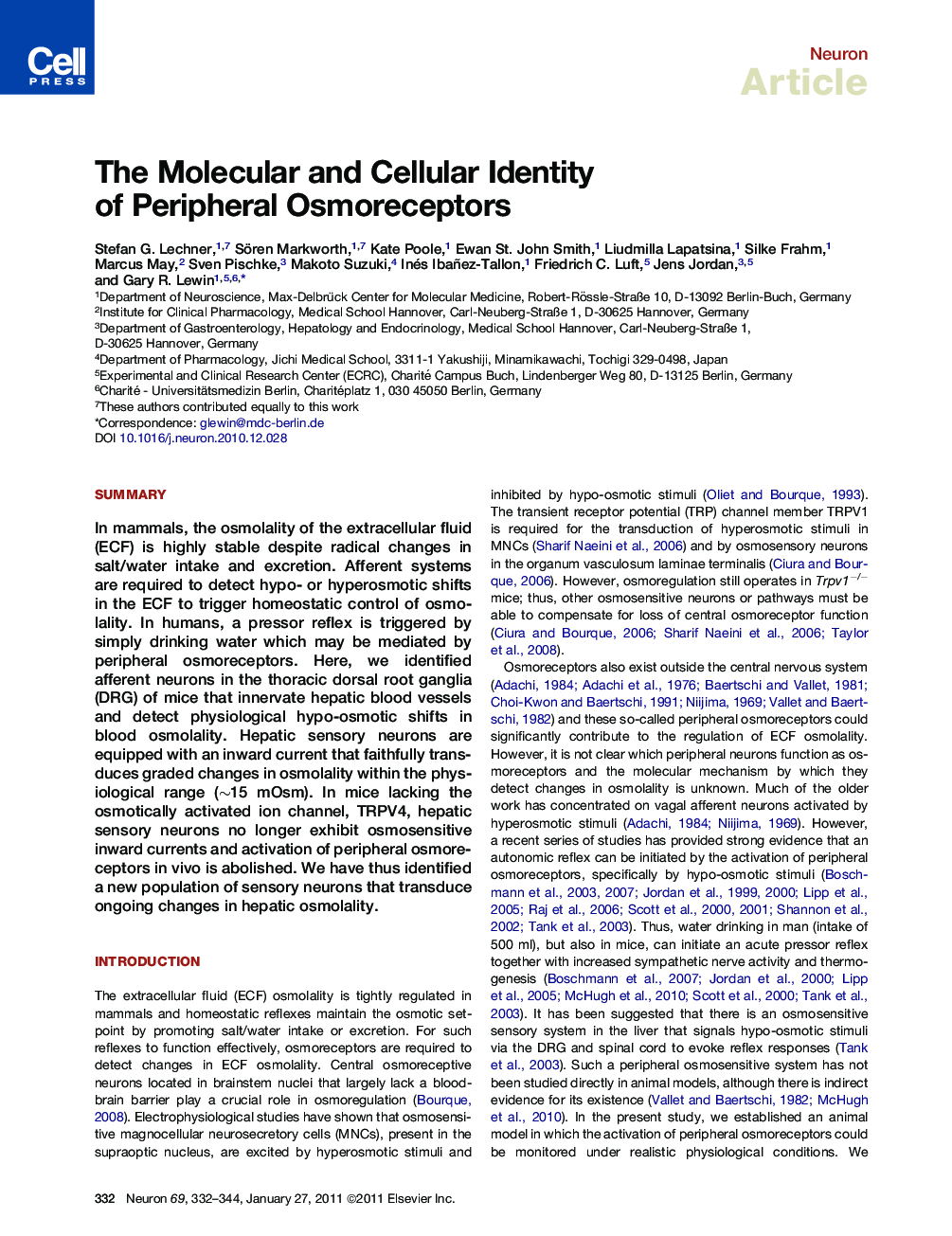| Article ID | Journal | Published Year | Pages | File Type |
|---|---|---|---|---|
| 4322230 | Neuron | 2011 | 13 Pages |
SummaryIn mammals, the osmolality of the extracellular fluid (ECF) is highly stable despite radical changes in salt/water intake and excretion. Afferent systems are required to detect hypo- or hyperosmotic shifts in the ECF to trigger homeostatic control of osmolality. In humans, a pressor reflex is triggered by simply drinking water which may be mediated by peripheral osmoreceptors. Here, we identified afferent neurons in the thoracic dorsal root ganglia (DRG) of mice that innervate hepatic blood vessels and detect physiological hypo-osmotic shifts in blood osmolality. Hepatic sensory neurons are equipped with an inward current that faithfully transduces graded changes in osmolality within the physiological range (∼15 mOsm). In mice lacking the osmotically activated ion channel, TRPV4, hepatic sensory neurons no longer exhibit osmosensitive inward currents and activation of peripheral osmoreceptors in vivo is abolished. We have thus identified a new population of sensory neurons that transduce ongoing changes in hepatic osmolality.
► Liver sensory neuron osmotic changes following normal water intake ► Liver sensory neurons are osmoreceptive and located in the thoracic DRG ► Liver osmoreceptors transduce small hypo-osmotic shifts (∼20 mOsm) ► Osmoreceptor transduction requires the trp channel TRPV4
